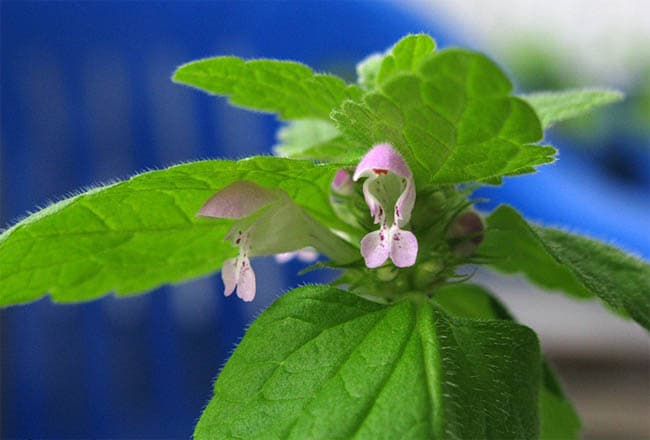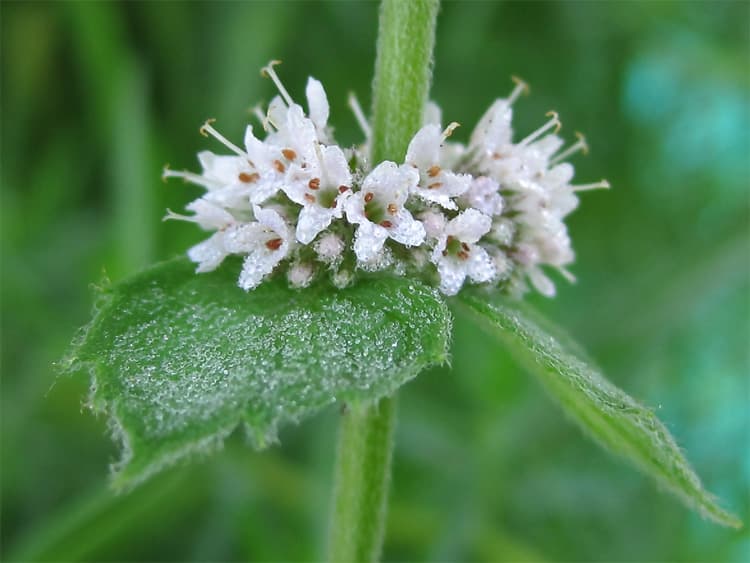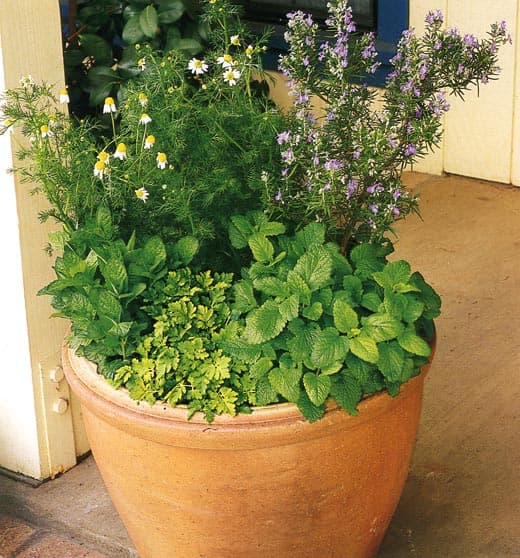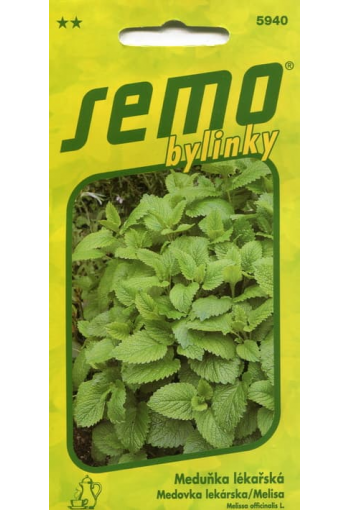Delicate, refreshing scent!
Spicy flavouring, essential oil, perennial cold-resistant culture. The plant is branched, with upright pubescent stems. Stem erect, branched, 50-100 cm high, leaves ovate.
It has a refreshing lemon aroma and a spicy taste. It is used fresh and dried as a seasoning for various dishes, and added to drinks. It has antispasmodic, analgesic, wound healing and soothing properties.
A light cover is recommended for the winter. Suitable for growing indoors. It is valued for its high content of organic acids, carotene, and essential oils. Young shoots and leaves have a pleasant lemon smell and a bitter-pleasant taste.
Lemon balm is used in cooking as a spice and seasoning, as well as a medicinal plant, in the form of infusions and compresses.
1.0 g = 1900 seeds.

Agricultural technology.
Sowing: seeds are sown in open ground in early spring (April-May). Sowing row (distance between rows 40-60 cm). Seedlings are thinned out in the garden by 25-30 cm. Sowing for seedlings is superficial and or to a depth of up to 0.5 cm. Seedlings appear in 20-25 days. (To obtain 100 plants, 0.3 g of seeds are sown.)
When using the seedling method, the seeds are sown at the end of March in boxes according to the 5x5 cm scheme. Plants are planted in open ground at the age of 70 days, at the end of May according to the 60x30 cm scheme.
Seedlings are planted in the first half of May. The feeding area is 30-40 cm. Melissa begins to bloom from the 2nd year of life.
Lemon balm is grown on fertile, sufficiently moist, loamy, non-acidic soils. Grows in one place for 10 years.
Care: consists of loosening, weeding, watering (after cutting greens) and top dressing.
Cleaning: it is recommended to start harvesting greenery in the second year. During the season, 2-3 cuts are carried out: the first - in June, the second - in a month.
Melissa is an exceptional honey plant. Not without reason, the Greek name "melissa" in translation means melliferous. Lemon balm leaves and stems contain essential oils, tannins, a large amount of vitamin C, provitamin A, caffeic and other acids. Fruits contain up to 20% fatty oil. Melissa essential oil is valued in perfumery. Young leaves and shoots cut before flowering are used fresh and dried. There is an opinion among the Arab people that an infusion of fresh young shoots of lemon balm "fills the heart with joy and fun."


Eng.: Common balm, lemon balm, balm, balm mint, blue balm, cure-all, dropsy plant, garden balm, melissa, sweet balm. Bot. syn.: Melissa cordifolia Pers.
Melissa has healing properties. Tinctures from it are used for general weakness of the body as a tonic, for diseases of the gastrointestinal tract and respiratory tract, mild forms of bronchial asthma, cardiac disorders, headaches and convulsions, and as a sedative, diaphoretic and carminative.
Melissa can be used in everyday life. Dry leaves of lemon mint repel moths, mice do not like its smell. Where melissa grows, plants are almost not damaged by fungal diseases. Dried leaves and shoots of lemon balm can be poured over tomatoes when placing them in boxes for storage. At the same time, the fruits are stored much longer than during normal storage.
Melissa is not only an effective but also a pleasantly smelling tasty plant. Because of its smell, it is also called lemon balm. It is not found growing wild but is bred in gardens on well-fertilized and sunlit soil. Blooming lemon balm attracts a large number of bees. When self-collecting, it is very important to collect leaves before flowering, because. after flowering, they no longer smell so pleasant. Fresh melissa leaves are an excellent seasoning for salads, sauces, soups and vegetable dishes, and even for this reason alone, it is worth giving her a place in the garden.
In medicine, only the leaves are used. They contain primarily essential oils, as well as tannins, bitter substances and flavonoids.
Melissa is consumed as a tea, tincture and bath additive. With nervousness and sleep disturbance, lemon balm tea helps, which should be used in the following dosage: three teaspoons of leaves per tea cup. Please don't forget to let the tea infuse for five minutes by closing the lid on the cup or teapot, and then shake off the condensation from it again into the tea. For a sedative and antispasmodic effect, essential oils are primarily important, which are the first to be extracted during brewing and immediately evaporate without a lid.
Melissa is especially effective if stress has affected the stomach and digestive organs. It relieves the feeling of heaviness and sometimes spasms, and also stimulates the appetite. Therefore, with such complaints, you need to drink one or two cups of lemon balm tea a day.
Lemon balm leaves can be very easily combined with other sedatives, so they should not be missing in any soothing or sleeping tea. For children, one cup before bed is enough to relieve anxiety and turn exam fears into pleasant dreams. The effectiveness of a full bath with lemon balm cannot be underestimated. Those who have such an opportunity should take it at least two to three times a week before going to bed.
Even if you do not have the symptoms mentioned, but just had a busy day or a hard car trip, and you want to be fine again, a lemon balm bath is just what you need. Small children, who are very mobile and excitable, noticeably calm down after a bath with lemon balm.











